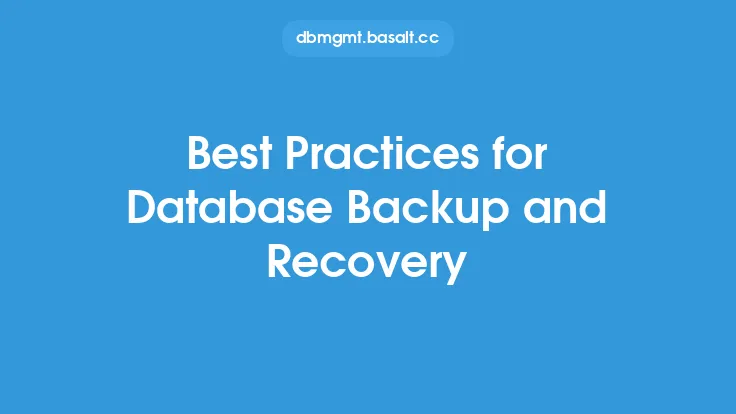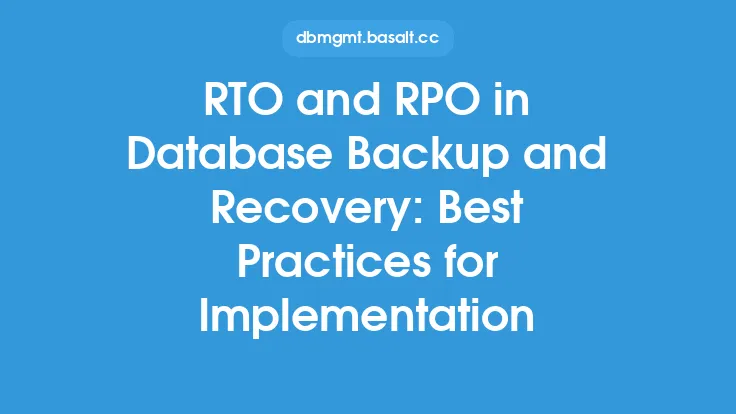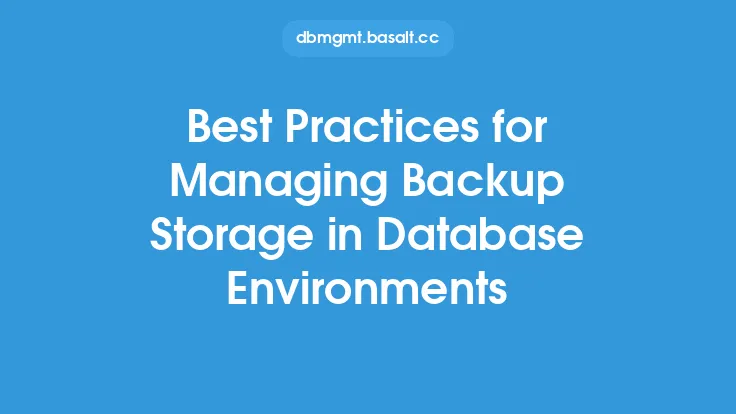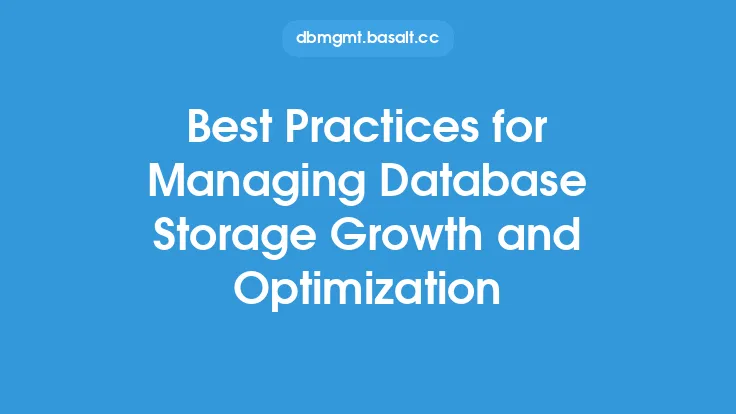Database backup scheduling and retention are crucial aspects of a comprehensive database backup strategy. A well-planned backup schedule ensures that data is consistently protected, and a retention policy guarantees that backups are stored for an adequate amount of time to meet recovery needs. In this article, we will delve into the best practices for database backup scheduling and retention, providing you with the knowledge to develop a robust and reliable backup strategy.
Understanding Database Backup Scheduling
Database backup scheduling refers to the process of planning and automating the creation of database backups. A well-designed backup schedule takes into account the database's workload, data volatility, and recovery requirements. The primary goal of backup scheduling is to ensure that backups are created frequently enough to minimize data loss in the event of a failure or data corruption.
When designing a backup schedule, consider the following factors:
- Database size and complexity: Larger databases require more frequent backups to minimize the time it takes to recover in case of a failure.
- Data change rate: Databases with high data volatility require more frequent backups to capture changes and ensure data consistency.
- Recovery time objective (RTO) and recovery point objective (RPO): The RTO defines the maximum time allowed for recovery, while the RPO defines the maximum amount of data that can be lost. Backup scheduling should be designed to meet these objectives.
- System resources: Backup operations can consume system resources, such as CPU, memory, and I/O bandwidth. Scheduling backups during periods of low system activity can help minimize the impact on database performance.
Best Practices for Database Backup Scheduling
To develop an effective backup schedule, follow these best practices:
- Create a full backup on a regular basis, such as weekly or monthly, to provide a baseline for incremental or differential backups.
- Use incremental or differential backups to capture changes since the last full backup. This approach reduces the storage requirements and backup window.
- Consider using transaction log backups for databases that require high data consistency and minimal data loss.
- Schedule backups during periods of low system activity to minimize the impact on database performance.
- Use automation tools to schedule and manage backups, ensuring consistency and reliability.
- Monitor backup jobs and receive notifications in case of failures or errors.
Understanding Database Backup Retention
Database backup retention refers to the policy of storing backups for a specified period. The primary goal of backup retention is to ensure that backups are available for recovery in case of data loss or corruption. A well-designed retention policy takes into account the database's recovery requirements, regulatory compliance, and storage constraints.
When designing a retention policy, consider the following factors:
- Recovery requirements: The retention period should be long enough to meet the RPO and allow for recovery in case of data loss or corruption.
- Regulatory compliance: Certain regulations, such as GDPR or HIPAA, require data to be stored for a specified period.
- Storage constraints: The retention period should be balanced against storage costs and capacity constraints.
- Data archiving: Consider archiving backups for long-term storage to free up space and reduce storage costs.
Best Practices for Database Backup Retention
To develop an effective retention policy, follow these best practices:
- Store backups for a minimum of 30 days to allow for recovery in case of data loss or corruption.
- Consider storing backups for a longer period, such as 6-12 months, to meet regulatory compliance or business requirements.
- Use a tiered storage approach, where backups are stored on different media, such as disk, tape, or cloud storage, to balance storage costs and capacity constraints.
- Use data deduplication and compression to reduce storage requirements and minimize storage costs.
- Monitor storage usage and adjust the retention policy as needed to ensure that backups are stored for the required period.
- Consider using backup cataloging and indexing to facilitate backup retrieval and recovery.
Implementing Database Backup Scheduling and Retention
Implementing a database backup scheduling and retention strategy requires careful planning and execution. The following steps can help you develop and implement an effective strategy:
- Assess your database's backup requirements, including data volatility, recovery requirements, and regulatory compliance.
- Design a backup schedule that takes into account the database's workload, data change rate, and system resources.
- Develop a retention policy that balances recovery requirements, regulatory compliance, and storage constraints.
- Choose a backup tool that supports automation, scheduling, and retention management.
- Monitor backup jobs and storage usage, and adjust the schedule and retention policy as needed.
- Test and validate backups regularly to ensure that they are complete, consistent, and recoverable.
Conclusion
Database backup scheduling and retention are critical components of a comprehensive database backup strategy. By following best practices and considering factors such as data volatility, recovery requirements, and storage constraints, you can develop a robust and reliable backup strategy that ensures data protection and availability. Remember to monitor and adjust your backup schedule and retention policy regularly to ensure that they continue to meet your database's evolving needs.





